What Is Product-Led Growth? Does It Work? – With Examples
-
UncategorizedUpdatedPosted:
On this page
The term "product-led growth" (PLG)was only coined in 2016, but it’s made its mark on the B2B software-as-a-service (SaaS) world. At the time, an investor at OpenView Partners, Blake Bartlett, noticed that more B2B SaaS companies were bypassing the traditional software sales process and selling straight to the consumer, via their websites.
As Bartlett observed, "Buying power has shifted for business software, and end users are the new gatekeepers. End users want a customer journey that begins with product-led self-service, rather than human-led sales conversations."
In 2023, PLG is now a foundational growth strategy. For startups and scaleups looking to activate leads, increase revenue, and ultimately drive customer success, PLG may also be the best path forward.
What Is Product-Led Growth?
Product led growth is a business model that focuses on building products that are so compelling that customers will naturally want to use them and tell their friends about them. It is a customer-centric approach to growth that relies on the product and the user experience to drive adoption and expansion. It is the counterpart to a sales-led growth strategy (SLG), which is adopted by many enterprise software companies, such as Salesforce.
The product-led growth model is particularly effective for small-to-medium size SaaS businesses. Software products are most easily understood with hands-on experience, and if you don’t have the financial resources or manpower to do tons of marketing or 1:1 sales for new customers that come in, PLG is a great way to reduce customer acquisition costs (CAC). By reducing the friction in the product onboarding process, PLG also allows companies to build deeper relationships with their existing users, which can lead to greater retention, increased loyalty, and higher lifetime value.
If you are a product leader, you should consider adopting a product-led growth strategy if you want to grow your company quickly and sustainably.
What Product-Led Growth Is Not
Product-led growth is not:
- Expecting your product to do all the work of sales and marketing
- A set-it-and-forget-it freemium model
- A hands-off approach to customer service
- Releasing untested or not-yet-validated products to the public
- A strategy based on "virality"
- Exclusive from traditional sales—PLG and SLG can work together.
- The product team’s responsibility—it’s a collaboration between Product, Growth, Marketing and Customer Success.
A PLG strategy isn’t a magic pill that will propel all sales for your company going forward. It’s a tool that you can use to support high-quality products and to guide you as you focus on improving the user experience and the customer journey.
Is PLG Right for Every Company?
The short answer is no. PLG is not a one-size-fits-all strategy. However, it’s also not binary; product-led growth exists on a spectrum. For instance:
- Some companies only sell via sales reps
- Some companies only sell via a tiered fremium model, starting with a solo plan or free trial
- Some companies do a combination of both
PLG definitely isn’t for every business, but many of the ideas that have proved most successful for true PLG companies can serve as inspiration for others.
What Traits Do PLG Companies Have in Common?
While PLG companies don’t depend totally on "going viral" for success, there is an element of virality built into the product that allows it to be easily shared among teams, departments, and across professional social networks.
This is product virality, which Hubspot defines as,
"[U]sers and customers generate new users and customers of a product by either inviting new users in their network to get more value from the product or by sharing and evangelizing a product to grow awareness within their network."
Some qualities that these products have in common:
- Functionality that individual users can get value from quickly. The product is high quality, solves a specific pain point, and has low price barriers to entry. A low time-to-value ratio.
- Product is front-and-center in the go-to-market strategy. Sales are done bottoms-up and self-serve, and there is a free or freemium product, with an option to layer in 1:1 Sales to close larger deals.
- Marketing is based on growth loops more than funnels. Product-driven growth loops occur when one user invites another user to the product, or when using the product results in exposure, like sharing a link. Going beyond word-of-mouth, the product has referral capacity built into the UX.
- Metrics are based on data-driven insights and accurate analytics. PLG teams have a deep understanding of signup sources, and the actions and behaviors needed for users to reach product activation. This is where customer-centric analytics tool like Vero Connect come in handy.
In each case, product management (including user experience design) is combined with growth marketing tactics – building sharing options into the product experience, and creating a sustainable sales engine that responds to data-driven insights and customer needs.
Successful Companies Who Are Making the Most of PLG
The best way to gain a deeper understanding of product-led growth is to look at the companies that have implemented the strategy successfully.
Below we’ve highlighted some outstanding product-led businesses.
Calendly
Calendly’s suite of product features was built around one common and glaring pain point: the endless back-and-forth of scheduling meetings. But it’s successfully scaled up to be useful on an organizational level, with many plans available for teams and enterprises.
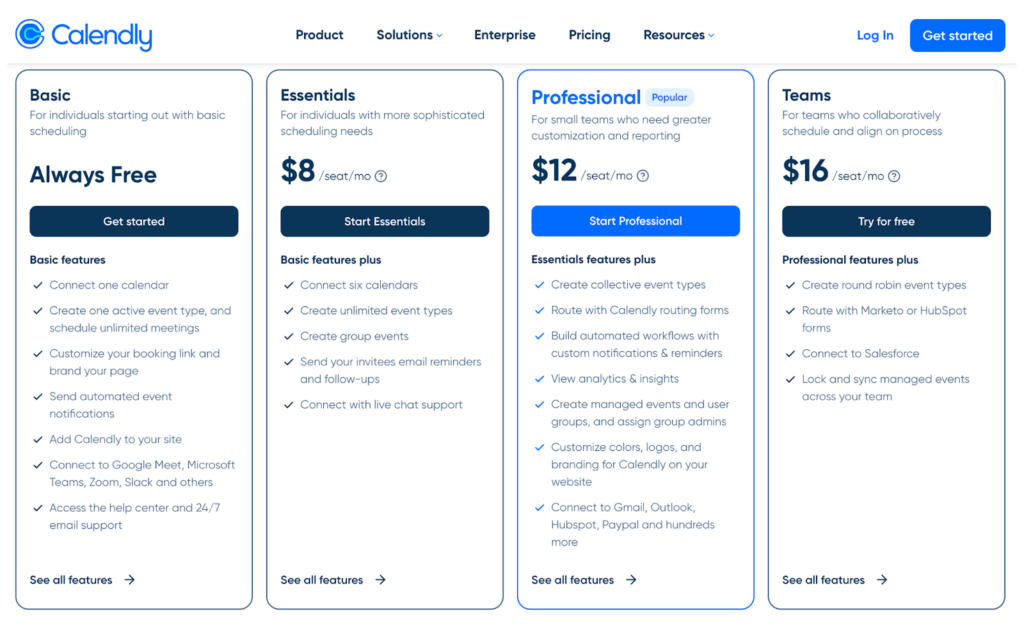
As former Chief Product Officer, Oji Udezue, writes in OpenView: "It’s the combination of a strong product-market fit with a PLG strategy that provides the right conditions for virality to take hold."
How Calendly implements the best of PLG tactics:
- The tool is useful and available to individuals, but also scales up to organization-wide and enterprise levels.
- The product UI is designed with built-in virality (personal Calendly links for every user)
- The first marketing touchpoint is often a direct interaction with the product (someone sends you a link)
- Customizable freemium pricing for solopreneurs to SMBs to Enterprise.
- The sales team takes on large enterprise customers, but PLG takes care of the rest
- Upsell value is clearly stated – when the whole team uses Calendly, value is increased (greater convenience, lower cost per user)
- Calendly integrates with existing productivity tools, namely Google Calendar, Google Drive, Notion and Zoom
Wistia
Wistia, the video marketing platform for business, started out as a bootstrapped SaaS with a freemium model, but now uses a combo of sales-led and product-led GTM strategy. Their approach can be summarized with their “Watch Demo” page. It’s a product demo video that asks potential customers for their contact info, and also links to pricing plans.
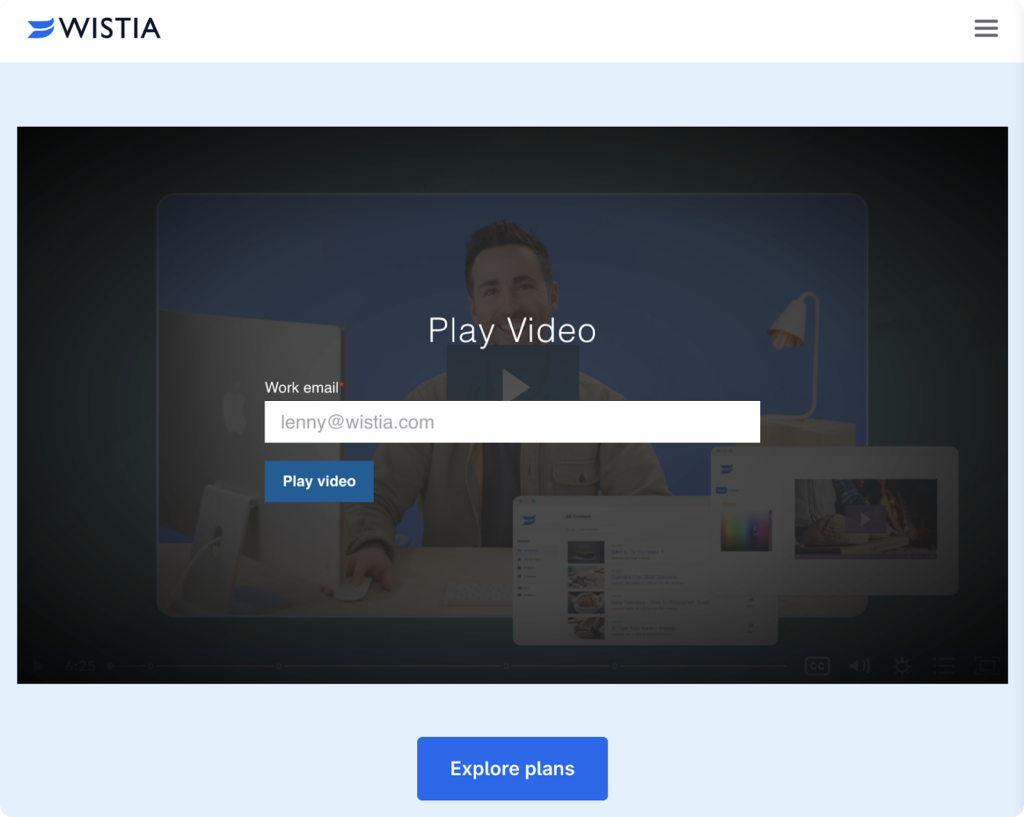
It empowers the customer to choose how they’d like to proceed with the sales cycle.
As Pete von Burchard, VP of Sales at Wistia, says,
"There are many users who just need a place to upload a media video or a podcast, and embed that on their website. But there’s also this other end of the spectrum of folks who are leveraging that content to build audiences, creating serial content, and advertising to lookalike audiences on Facebook. We’ve realized that most businesses that are investing in content are on this spectrum of sophistication, and they’re almost always moving up."
In the same interview, von Burchard emphasizes that PLG companies should, for the most part, let the customers approach the Sales team, rather than the other way around.
"As a product-led company, you want your leads to know that your stellar product comes first. Your sales team is simply there to help them make the most of it—no pushing required."
How Wistia deploys the best of PLG:
- Wistia offers flexible freemium pricing, from a free individual plan up to the enterprise plan.
- Wistia invests heavily in multimedia content marketing to support its brand and educate its users on video marketing. This is also a product win, as it enables customers to be more successful with Wistia’s product.
- The product is best-in-class for business video: With simple UI and minimal branding, it allows customers to create and launch their own videos, quickly.
- Integrates with other marketing tools
Notion
Since its launch in 2016, Notion has dominated the personal productivity space. More recently, it has spread as a knowledge management tool for companies of all sizes.
Like Wistia and Calendly, Notion operates on a hybrid PLG/SLG model, with individual users and SMBs mostly signing up with the freemium pricing tiers, and larger organizations onboarding with Sales.
What makes Notion unique is its grassroots growth which has mostly
come thanks to Notion power users. Early on, Notion leaders
recognized that it only takes one product evangelist to bring a
whole team on board. And so, they put a lot of marketing efforts
into community and user-generated content (UGC), to establish
growth loops.
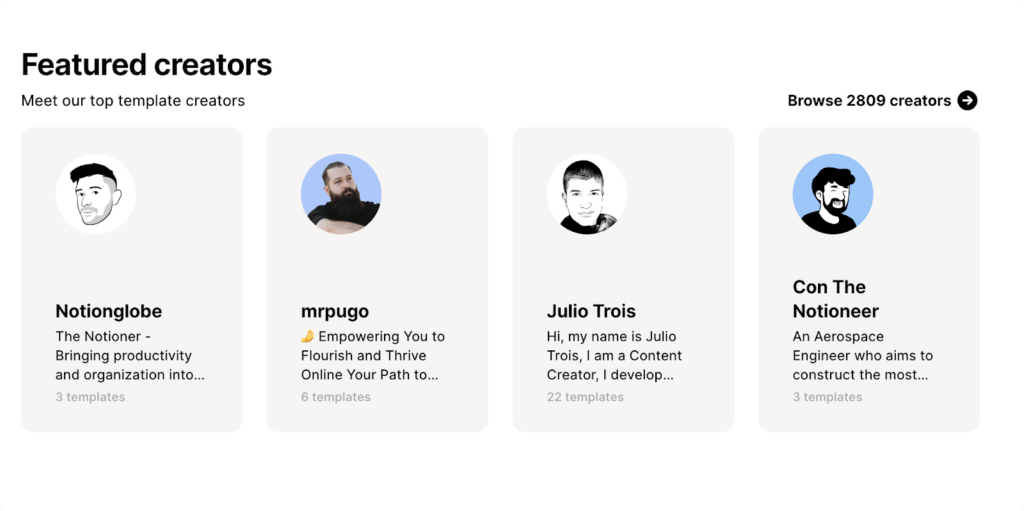 Now the Notion community creates its own Notion templates, answers
Notion questions for new users and offers useful feedback to the
Notion product team.
Now the Notion community creates its own Notion templates, answers
Notion questions for new users and offers useful feedback to the
Notion product team.
How Notion deploys the best of PLG:
- Freemium model, supported by Sales
- Friendly and flexible UX, notably hand-drawn avatars, emoji-based organization, and its signature block-based UI
- Strong emphasis on virality via community and UGC, especially Notion Templates
- Focus on customer PLG metrics: Notion’s head of growth, Rachel Hepworth, says that the company focuses on 3 main metrics to determine success with the product: activated teams, upgraded team accounts, and value of the entire pipeline at any given time.
Starting with products like Calendly, Wistia, and Notion can be the launchpad for enormous growth.
How PLG Can Augment a Sales-Led GTM and Vice-Versa
Product-led growth can absolutely augment a traditional sales-led strategy. It can:
- Build brand awareness so that there will be some familiarity with your product ahead of sales calls
- Create individual product champions within large organizations
- Bring in leads so you can reduce outbound outreach efforts
- Create opportunities to deliver product packages with both out-of-the-box solutions and customizable features
As Growth expert Hila Qu says in Lenny’s Newsletter, "Companies like Canva and Slack started with PLG and added an SLG motion. Companies like HubSpot and GitLab started with SLG and added a PLG motion."
Let’s look at the two major public companies Qu mentioned that have implemented PLG on top of SLG business models: Hubspot and Gitlab.
Hubspot
Flexible freemium options and CTAs like "Buy now" and "Explore"
allow you to experience the paid product on your own, but a
prominently located phone number also makes it easy to contact a
sales rep.
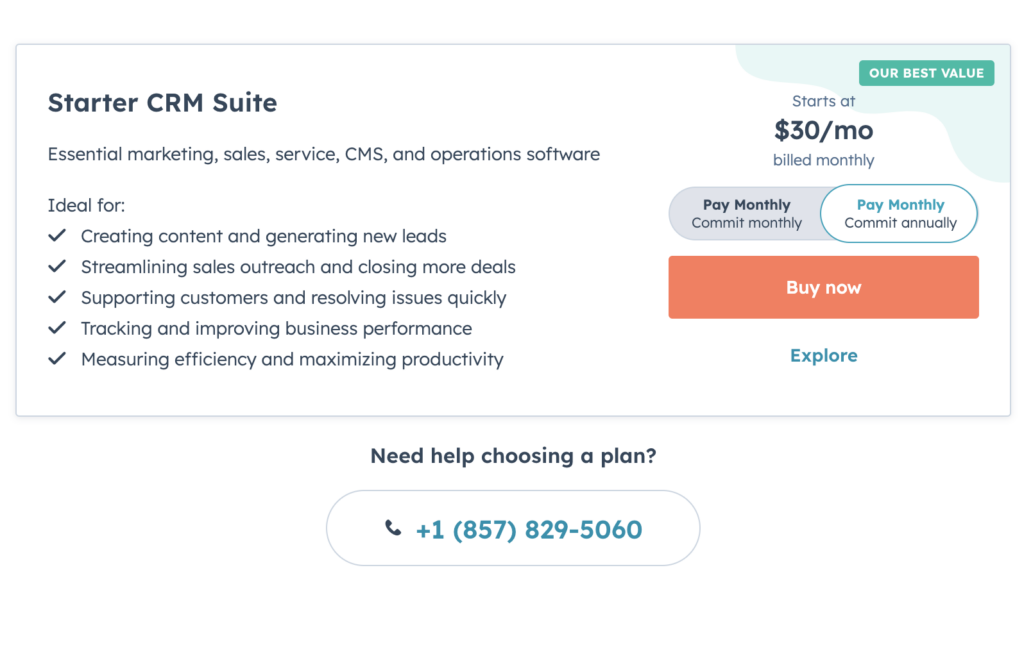
Gitlab
"The Complete DevOps platform" offers a free trial to all users, from individual developers to large software companies.
Moreover, the chat modal that opens on the homepage offers a variety of self-serve and guided options, from exploring content resources created by the marketing team to scheduling a meeting with the Sales team.
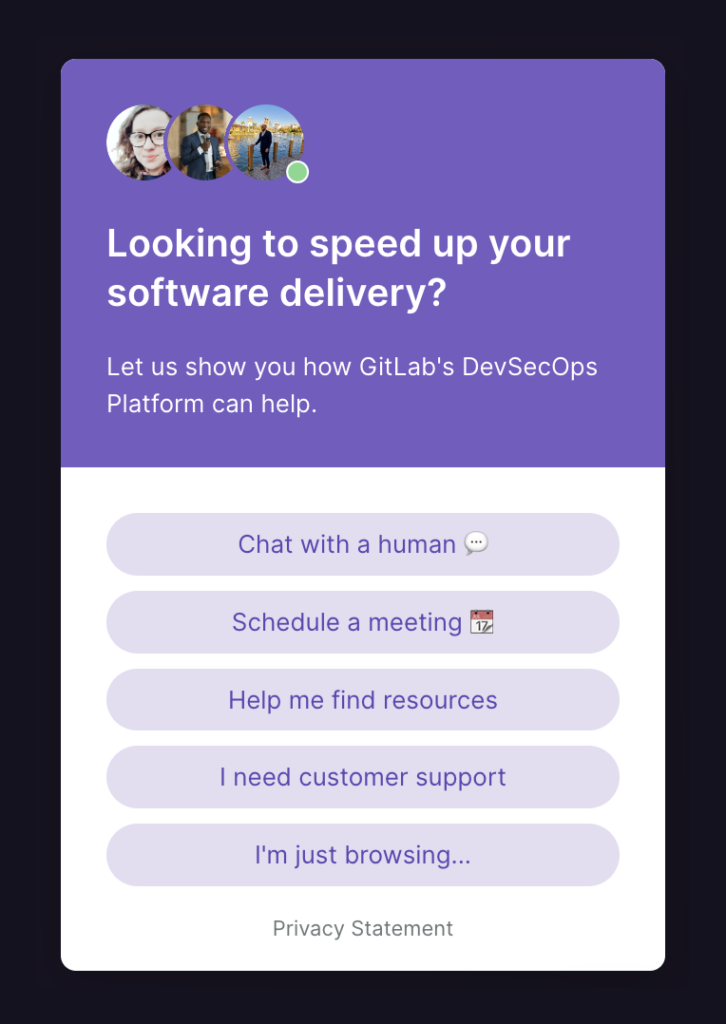
The Future of PLG, the Future of Sales
In the future, the most successful practitioners of PLG will focus on tailoring the product experience for individuals.
They will focus on defining detailed customer journeys and analyzing customer interactions using solutions that are more agile than a traditional feature-heavy CRM. The insights they gain will determine how they sell.
And with the added capabilities of AI, product experiences will be tailored to each customer’s needs, so that no one has to wrestle with a one-size-fits-all approach.
More power will be shifted over to the consumer, and to the companies who can meet them where they are with flexible solutions.
In summary, we’ll start to see:
- More complete customer journey mapping
- More personalized sales and marketing messaging
- More advanced data analytics tools that integrate with existing software
Want to send more personalized mobile and email messages to your users?
Learn moreCustomer story

How Vero helps Dribbble take full advantage of their customer data to improve personalization
